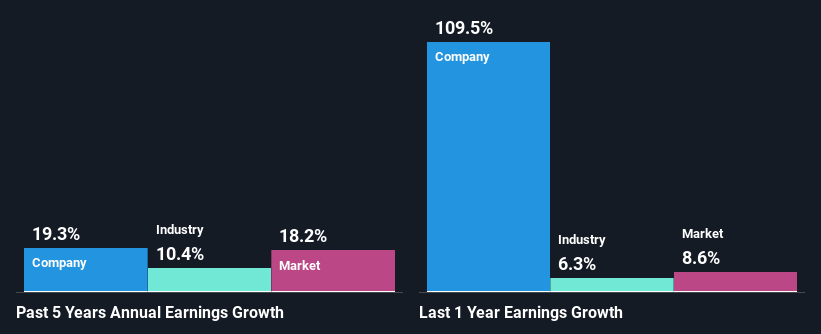Stock Analysis
Is Antibiotice S.A.'s (BVB:ATB) Recent Stock Performance Influenced By Its Fundamentals In Any Way?

Most readers would already be aware that Antibiotice's (BVB:ATB) stock increased significantly by 33% over the past three months. Given that stock prices are usually aligned with a company's financial performance in the long-term, we decided to study its financial indicators more closely to see if they had a hand to play in the recent price move. In this article, we decided to focus on Antibiotice's ROE.
Return on equity or ROE is a key measure used to assess how efficiently a company's management is utilizing the company's capital. Simply put, it is used to assess the profitability of a company in relation to its equity capital.
Check out our latest analysis for Antibiotice
How To Calculate Return On Equity?
The formula for ROE is:
Return on Equity = Net Profit (from continuing operations) ÷ Shareholders' Equity
So, based on the above formula, the ROE for Antibiotice is:
9.5% = RON81m ÷ RON851m (Based on the trailing twelve months to December 2023).
The 'return' is the yearly profit. Another way to think of that is that for every RON1 worth of equity, the company was able to earn RON0.09 in profit.
What Has ROE Got To Do With Earnings Growth?
So far, we've learned that ROE is a measure of a company's profitability. We now need to evaluate how much profit the company reinvests or "retains" for future growth which then gives us an idea about the growth potential of the company. Assuming all else is equal, companies that have both a higher return on equity and higher profit retention are usually the ones that have a higher growth rate when compared to companies that don't have the same features.
Antibiotice's Earnings Growth And 9.5% ROE
When you first look at it, Antibiotice's ROE doesn't look that attractive. However, its ROE is similar to the industry average of 11%, so we won't completely dismiss the company. Even so, Antibiotice has shown a fairly decent growth in its net income which grew at a rate of 19%. Given the slightly low ROE, it is likely that there could be some other aspects that are driving this growth. For example, it is possible that the company's management has made some good strategic decisions, or that the company has a low payout ratio.
As a next step, we compared Antibiotice's net income growth with the industry, and pleasingly, we found that the growth seen by the company is higher than the average industry growth of 10%.

Earnings growth is a huge factor in stock valuation. The investor should try to establish if the expected growth or decline in earnings, whichever the case may be, is priced in. Doing so will help them establish if the stock's future looks promising or ominous. If you're wondering about Antibiotice's's valuation, check out this gauge of its price-to-earnings ratio, as compared to its industry.
Is Antibiotice Making Efficient Use Of Its Profits?
Antibiotice's three-year median payout ratio to shareholders is 8.4% (implying that it retains 92% of its income), which is on the lower side, so it seems like the management is reinvesting profits heavily to grow its business.
Besides, Antibiotice has been paying dividends for at least ten years or more. This shows that the company is committed to sharing profits with its shareholders.
Conclusion
On the whole, we do feel that Antibiotice has some positive attributes. With a high rate of reinvestment, albeit at a low ROE, the company has managed to see a considerable growth in its earnings. While we won't completely dismiss the company, what we would do, is try to ascertain how risky the business is to make a more informed decision around the company. Our risks dashboard will have the 1 risk we have identified for Antibiotice.
Valuation is complex, but we're helping make it simple.
Find out whether Antibiotice is potentially over or undervalued by checking out our comprehensive analysis, which includes fair value estimates, risks and warnings, dividends, insider transactions and financial health.
View the Free AnalysisHave feedback on this article? Concerned about the content? Get in touch with us directly. Alternatively, email editorial-team (at) simplywallst.com.
This article by Simply Wall St is general in nature. We provide commentary based on historical data and analyst forecasts only using an unbiased methodology and our articles are not intended to be financial advice. It does not constitute a recommendation to buy or sell any stock, and does not take account of your objectives, or your financial situation. We aim to bring you long-term focused analysis driven by fundamental data. Note that our analysis may not factor in the latest price-sensitive company announcements or qualitative material. Simply Wall St has no position in any stocks mentioned.
About BVB:ATB
Antibiotice
Antibiotice S.A. produces and sells medicinal products in Romania.
Flawless balance sheet with solid track record.

